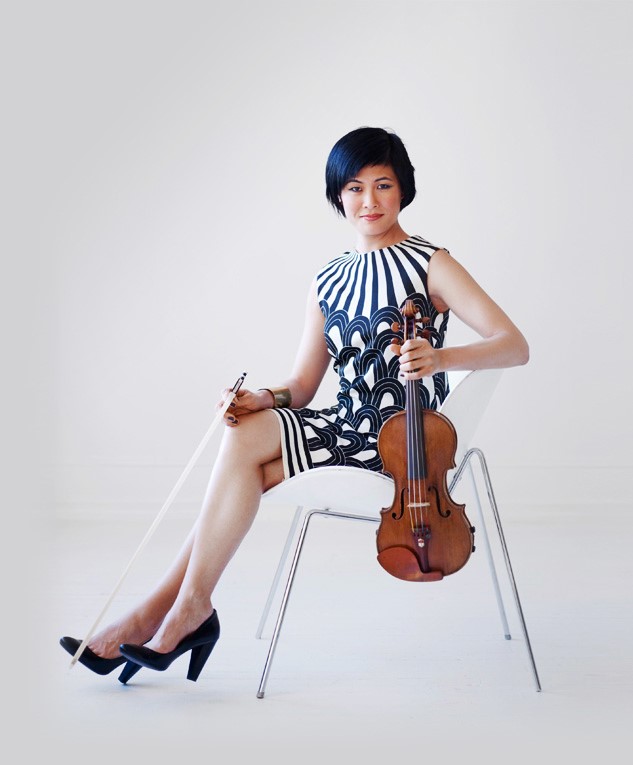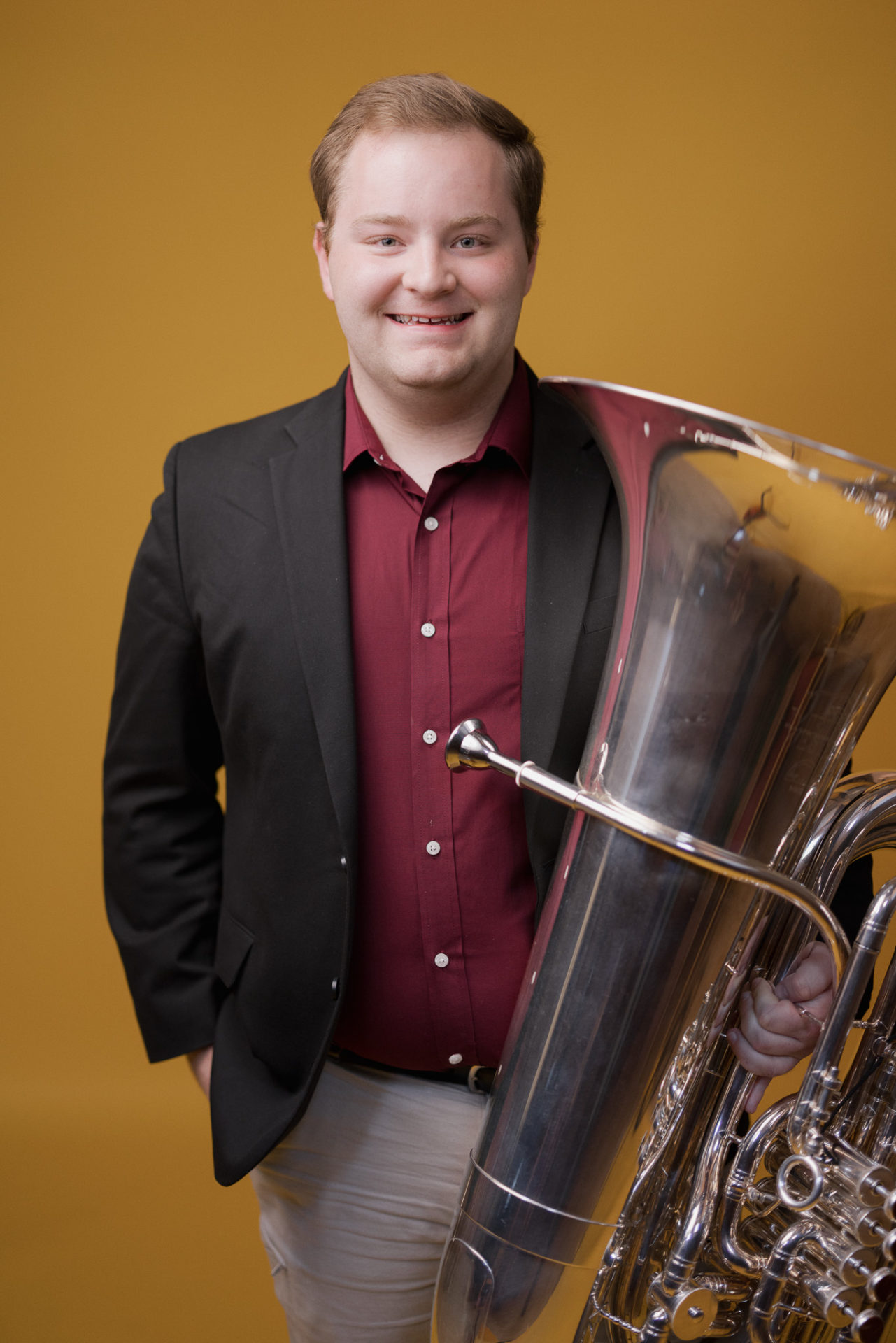The Show Must Go On: Aspinall Steps in at the Schermerhorn
“The show must go on” were the first words spoken to the Nashville Symphony audience on Thursday February 22nd by Alan Valentine, CEO and President of the Symphony. Valentine explained that in-between the dress rehearsal that afternoon and the evening’s concert, Music Director Giancarlo Guerrero had fallen ill. Associate Conductor Nathan Aspinall would be conducting the performance. This was unfortunately presented as something regrettable, when it was a great opportunity for Aspinall who has already had a busy month at the helm of the Nashville Symphony: he made his subscription concert debut earlier this month with a performance of Sergei Prokofiev’s 5th Symphony.
The audience was disappointingly sparse for the evening. A further loss was that the original opening piece to the concert, Stride by Tania León, would not be performed. I can only assume this was due to the change of conductor, but I was further disappointed that nothing else was offered in its place. Surely the group has a piece like Bernstein’s Candide Overture in its back pocket and that would be a nice substitute for Stride because León worked with Bernstein in the 1970’s.

Regardless, the concert proceeded with the originally scheduled second piece: Samuel Barber’s Violin Concerto with Jennifer Koh as the soloist. In my opinion, this is one of the most gorgeous pieces of music ever written. Begun in 1939 in Switzerland, Barber wrote the first two movements before the outbreak of World War II. After getting back to the United States he felt that the piece was not virtuosic enough for the soloist and wanted to write a difficult last movement.
Thursday’s performance started off quick and tentatively, which lost some of the nuance required for a truly great performance. Jennifer Koh played marvelously throughout the first movement savoring each mini climax as it came. In the second movement the conductor and orchestra both loosened up, allowing much more freedom in the performance. Koh again played beautifully, with an incredible range of dynamic expression throughout. At moments one could hear a pin drop in the Laura Turner concert hall; she had the audience wrapped around her finger. The last movement is in a much different character from the first two. The tempo marking is “Presto in moto perpetuo” and for a moment I thought perpetual motion was possible with Koh. A constant stream of notes flowed from her instrument as the orchestra was whipped up into orchestral hysterics. A long-standing ovation for Koh was her reward and she treated the audience to an encore of Bach.
During the intermission I reflected with my father, who attended the concert with me, about the first half of the concert. It had a rocky start but what bothered us both more was that we felt totally separated from the performers onstage, almost as if we were unwanted guests. It began with an apology and one third of the scheduled performance was cut. Thankfully the second half was the opposite of the first. At the beginning of the half William Leathers, Principal Trumpet, came out to introduce the audience to Chandler Currier, the new Principal Tuba. Through humor and backstories Leathers led the audience to become invested in Chandler, and it was a breath of fresh air to see individual members of the orchestra featured. The audience felt welcome and gave Chandler rapturous applause.
The second half of the concert was Edward Elgar’s Enigma Variations, written in 1899. Nathan Aspinall was completely confident with this music and the orchestra responded with a totally transformed sound. Asked to write a program note for his own piece in 1911 Elgar supplied the following text:
This work, commenced in a spirit of humour & continued in deep seriousness, contains sketches of the composer’s friends. It may be understood tha

t these personages comment or reflect on the original theme & each one attempts a solution of the Enigma, for so the theme is called. The sketches are not ‘portraits’ but each variation contains a distinct idea founded on some particular personality or perhaps on some incident known only to two people. This is the basis of the composition, but the work may be listened to as a ‘piece of music’ apart from any extraneous consideration.
This piece starts out with a solemn string theme and then 14 variations, each dedicated to a friend. It finishes with a variation for the composer himself. You may not recognize the name of the piece, but you would probably recognize the themes. Compositionally, this piece is a huge success. Around 30 minutes in length, each movement is only a few minutes and Elgar does not get bogged down in one variation over another creating a structural imbalance.
The whole piece was breathtaking, but a few moments stood out to me. The fourth movement, a forceful statement of the theme by the full orchestra, is the first powerful moment in the piece. Lasting only 40 seconds, it is also one of the shortest movements before flowing into the stately 5th movement. The fifth movement features the complete string section in their lower, more resonant registers. The tone of the strings throughout this section was amazing. A great reminder that as far as music technology has come, there is nothing quite like hearing the wood and strings resonate in person.
The ninth movement, subtitled “Nimrod”, is one of the most famous pieces in all classical music. It has particular significance in Britain, where it is used for solemn occasions. This is the slowest and most touching of all the movements and is quite marvelously orchestrated from a compositional standpoint. Thursday’s performance was on the faster side of the Adagio tempo marking, but the grandeur of the movement was not lost. As previously stated, the final movement is a portrait of the composer himself. It draws themes and moods from the Nimrod movement and the first movement which is dedicated to Elgar’s wife Alice. It ends in animated excitement with the organ added to the orchestration to reach a fortissimo ending chord. This is a wonderful piece as it shows off the orchestra from every angle: loud and soft moments, excited and subdued moments, etc. Aspinall and the Nashville Symphony rose to the challenge and put on a fantastic show. Overall the night was uneven, but given the circumstances it is understandable. Giancarlo Guerrero went on to conduct the other nights, and we at Music City Review wish him continuing good health.
The Nashville Symphony returns next week with Wayne Marshall conducting Bernstein’s Symphonic Dances from West Side Story and pieces by Duke Ellington, Gershwin, and Poulenc. Tickets can be purchased at nashvillesymphony.org



